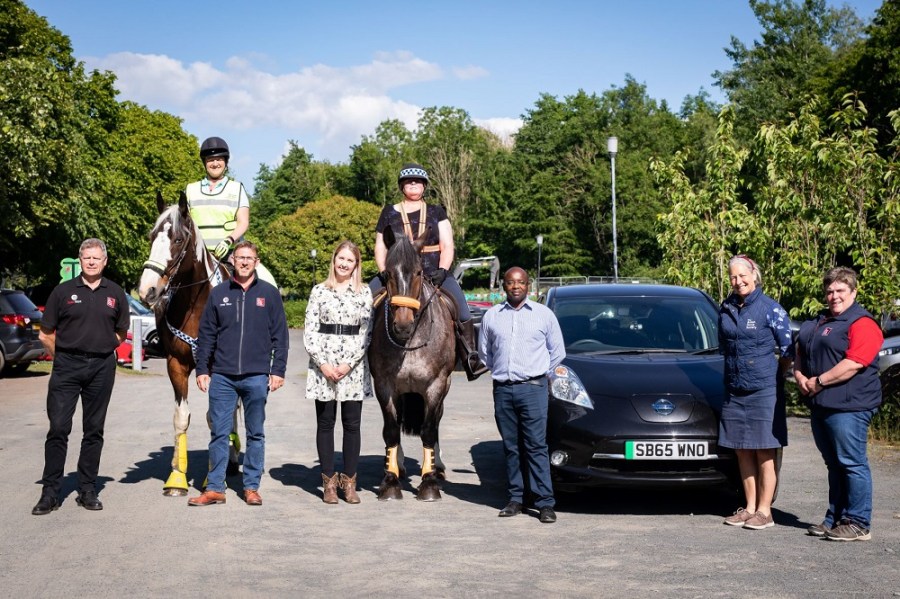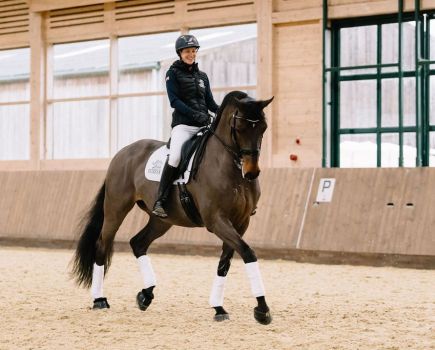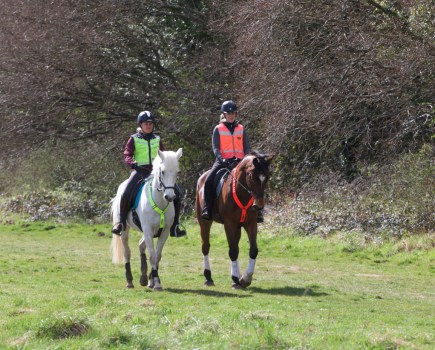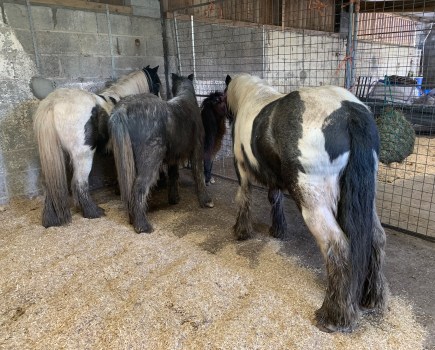A new report has found that the low-level noises produced by electrical vehicles (EV) can detected by a horse and they can be aware of the vehicle before a rider. The study was made by the British Horse Society (BHS), in collaboration with Robert Gordon University and the Electric Vehicle Association (EVA) Scotland.
“With more and more electric cars on Britain’s roads, this report’s new data and analysis provides significant insight,” said Alan Hiscox, Director of Safety at The British Horse Society. “Not only will it help to alleviate concerns from riders about how their horse reacts to electric vehicles due to limited sound levels, but it will also be a vital tool when it comes to encouraging drivers, regardless of whether they are driving an electronic or conventional vehicle, to be careful when passing horses on the road.”
Funded by the BHS Scotland, the report reiterates how important it is for all drivers to adhere to the ‘Dead Slow’ advice, no matter what vehicle they’re driving. In line with the recent Highway Code changes, the campaign encourages drivers to slow down to 10mph and leave at least a cars width when passing a horse and rider on the roads.
Responsibility also lies with the rider to concentrate at all times and be aware of their surroundings. This is particularly important when it comes to electric vehicles, where the noise levels have been found to be harder to hear by humans than by horses.
“We are pleased to have joined forces with EVA Scotland and Robert Gordon University to encourage greater levels of safety between electric vehicle drivers and horse riders,” said Mr Hiscox as he presenting the report at a launch in Eglington Country Park in Scotland.
Rising accidents
“The number of horse and electrical vehicle accidents and incidents are on the rise with society’s shift to electric vehicles, bicycles, and scooters,” said Professor James Njuguna, Research Strategic Lead at Robert Gordon University. “A better understanding of horse behaviour in the presence of an electric vehicle is a step forward for the shared road safety of all road users: drivers, riders, and horses alike. It is a pleasure to support this effort alongside the BHS and EVA Scotland in this campaign. The findings clearly indicate the horse is cautiously recognising EVs long before the rider does and forms a baseline for detailed studies in future.”
EVA Scotland Director, Neil Swanson welcomed the research findings.
“Research such as this is essential and invaluable both from an EV driver’s and a horse rider/owner’s perspective,” he said. The safety of horses and their riders on roads is paramount and understanding how to support the vigilance of both parties is essential if incidents are to be avoided.
“As the number of electric vehicles on Scotland’s highways and by-ways soars, EVA Scotland encourages all road users to take note of the report’s findings and strive towards creating harmony on our roads. We believe that a great deal of the learning here applies beyond equine awareness, with the knowledge able to re-inform drivers of the needs of other road users, pedestrian or wheeled.”









